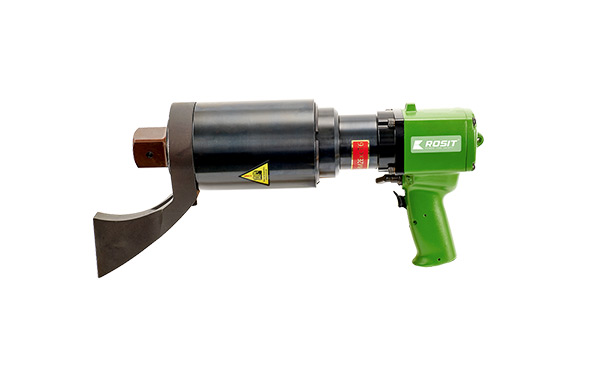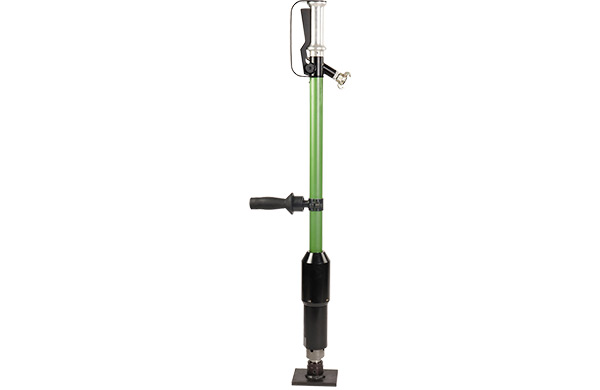- Power Tools
-

Saws
Chain Saw Concrete Chain Saw Band Saw Reciprocating Saw ...
-

Cutters
Pneumatic Cutter Pipe Cutting Machine Nut Cutter
-

Drills
Hammer Drill Pistol Hammer Drill Two Hand Operation Drill Column Drill ...
-

Impact Wrenches
Pneumatic Impact Wrench (Ex-proof Series) Pneumatic Impact Wrench (Ultra light Series) Emulsion Impact Wrench Nut Runner ...
-

Torque Wrenches
Pneumatic Torque Wrench Electric Torque Wrench Hydraulic Torque Wrench Hollow Hydraulic Wrench ...
-

Mining Waterjet Cutting Machine
Electric Mining Waterjet Cutting Machine Pneumatic Mining Waterjet Cutting Machine Emulsion Mining Waterjet Cutting Machine
-

Hammers
Pneumatic Chipping Hammer Hydraulic Chipping Hammer
-

Scaler
Pneumatic Long Reach Scaler
-

Rammer
Pneumatic Rammer
-

Grinders
Wet Grinder Angel Grinder Electric Grinder
-

Fan
Pneumatic Fan Heavy Fixed Fan
-

Hoist
Chain Hoist Electric Hoist Pneumatic Hoist Hydraulic Hoist ...
-

Winch
Pneumatic Winch
-

Pump
Pneumatic Submersible Pump Emulsion Submersible Pump
-

Assembly
Torque Multipler C-Hog Ring Plier
-
- Accessories
-

Cutting
Chainsaw Concrete Chainsaw Band Saw Reciprocating Saw ...
-

Drilling
Impact Drills Light Drills Magnetic Drills丨Rail Drills Balance Drills丨Angle Drills ...
-

Assembly
Impact Wrenches C-Hog Ring Plier
-

Hammer & Shovel
Chipping Hammer Derusting Shovel
-

Grinding
Grinders
-

Hydraulic Accessories
Nut Runner Cutter
-

General Accessories
Waterjet Cutting Machine Filter assy. Filter assy. Water Pump ...
-
- Company Profile
- Service
- News
-

Events
The 21st 2023 Taiyuan Coal (En The 17th Yulin International C The 20th TaiYuan (2021) Coal ( The 16th Ordors International Have a machine repaired or hav ...
-

Case Study
Specifications of adjustable w Have a machine repaired or hav
-

Industry News
Using Chainsaws to Cut Snow? What to do if the pneumatic wr Hydraulic chain saw Operation of the wrench Introduction to the principle ...
-
- Download
- Contact
Hydraulic Wrenches: Effective Shock Protection for Handheld Power Tools.Introduction of hydraulic wr
source:Industry News release time:2022-04-13 Article author:yu Popular:Air band saw

In general workplaces, leakage protectors, isolation transformers, etc. should be equipped when using Class I tools. Class II or III tools should be used in wet places. If Class I tools are used, a leakage protector with an operating current of not more than 30μA and an operating time of not more than 0.1s must be installed. When working in boilers, metal containers, and pipes, Class III tools or Class II tools equipped with leakage protectors should be used. The operating current of the leakage protector is not more than 15μA, and the operating time is not more than 0.1s. In special environments such as hot and humid, rain and snow, explosive or corrosive gases and other working environments, tools with corresponding protection levels and safety technical requirements should be used.
During installation and use, the safety isolation transformer of Class III tools, the leakage protector of Class II tools, the control box and power supply device of Class II and III tools should be kept away from the workplace. The power lead of the tool should be a tough rubber-covered wire or a plastic-sheathed soft copper wire. The protective grounding resistance shall not be greater than 4Ω. During operation, the protective cover of the running parts shall not be disassembled, and the grinding tool should be stopped when changing the tool.
Wear rubber insulating gloves, and if necessary, wear insulating shoes or stand on insulating pads, except that the voltage of 36V and below is used, the secondary winding of the power supply isolation transformer is not grounded, and the power supply circuit is equipped with a low-voltage leakage protector with reliable operation. The operating isolation transformer should be the primary and secondary double windings, the secondary windings should not be grounded, and the metal shell and iron core should be reliably grounded. Terminals should be closed or shielded. The primary winding should be specially equipped with a fuse, controlled by a bipolar knife, the lead wire length should not exceed 3m, and there should be no joints.
Before and after the tool is used, the custodian must carry out daily inspection, and the user should check before use. The contents of daily inspection include: whether the shell and handle are damaged and cracked, whether the mechanical protection device is in good condition, whether the rotating part of the tool is flexible, light and unobstructed, whether the electrical protection device is in good condition, whether the connection of the protection wire is correct and reliable, whether the power switch is normal and flexible, and whether the power plug and the power cord is intact. Problems found should be repaired or replaced immediately.
It should be inspected regularly by full-time personnel at least once a year. In areas with frequent changes in humidity and temperature or in places with harsh operating conditions, the inspection period should be shortened accordingly. It should be checked in time before the rainy season. In addition to the above checks, a 500V megohmmeter should be used to measure the insulation resistance of the circuit to the casing. For tools that have been left unused for a long time, the insulation must also be checked before use. Class I tools should be less than 2MΩ, Class II tools should be less than 7MΩ, and Class III tools should be less than 1MΩ; otherwise, dry treatment or maintenance should be performed.
The maintenance of tools should be carried out by a specially designated maintenance department, equipped with the necessary inspection equipment. The original design parameters of the tool shall not be arbitrarily changed, substitute materials with lower performance than the original shall not be used, and parts that do not conform to the original specifications shall not be replaced. The insulating gaskets and bushings in the tool shall not be installed or removed arbitrarily.
After maintenance, the insulation should be measured, and the withstand voltage test should be done between the live parts and the casing. The withstand voltage test voltage of class I tools isolated from live parts by basic insulation is 950V, class III tools is 380V, and the test voltage of class II tools isolated from live parts by reinforced insulation is 2800V.
Read recommendations:
AN23-3500 Pneumatic Torque Wrench (Angle Shaft)
Core Drill Morse Taper Sleeves
Carbide Inserts Twist Bits assy.丨DB83 Series
Analysis of the Reason and Shortcoming of Serious Wear of Hydraulic Pump
related articles
Using Chainsaws to Cut Snow?
2024-05-21What to do if the pneumatic wrench is weak
2022-12-19Hydraulic chain saw
2022-12-13Operation of the wrench
2022-12-06Introduction to the principle of pneumatic wrench
2022-11-28How to use the pneumatic wrench
2022-11-21Brief introduction to the principle of pneumatic wrench
2022-11-14Impact pneumatic wrench
2022-11-07Correct hydraulic wrench operation procedure
2022-11-01Hydraulic wrench torque pressure conversion
2022-11-01Field operation procedure of hydraulic wrench
2022-10-24Hydraulic radial plunger motor
2022-10-17The history of hydraulic motors
2022-10-17Principle of balance hydraulic wrench
2022-10-10The Price Factor of Smart Electric Torque Wrench
2022-10-10Introduction to the advantages of using intelligent electric torque wrench
2022-10-10The Price Factor of Smart Electric Torque Wrench
2022-10-10Classification and use of wrenches
2022-10-10hydraulic wrench pressure conversion
2022-10-10Introduction to the advantages of the use of intelligent electric torque wrench
2022-10-10Smart Electric Torque Wrench Selection Guide
2022-10-10Intelligent electric torque wrench for wind power generation
2022-10-09Uses of open-end wrenches.Pneumatic chainsaw
2022-10-08What are the driving parts of a hydraulic wrench and what they do
2022-09-30What are the driving parts of a hydraulic wrench and what they do
2022-09-23the commonly used wrenches
2022-09-22Introduction of several common wrenches
2022-09-21Application scope and daily maintenance method of hydraulic bolt tensioner
2022-09-20Characteristics of hollow hydraulic wrench and precautions for use
2022-09-19Characteristics and precautions of driving hydraulic wrench
2022-09-17Power Tools
CN22-2434 Nut Cutter丨Split-type Nut Cutter
2023-06-17AN23-4500 Pneumatic Torque Wrench (Angle Shaft)
2024-03-12CR21-008 Light Pneumatic Reciprocating Saw
2020-06-13AN51-4000 Electric servo CNC Torque Wrench
2023-06-27RH21-3500 Pneumatic Chipping Hammer
2021-06-15AW21-850 Pneumatic Impact Wrench (Ex-proof Series)
2021-06-15DM31-035 Hydraulic Magnetic Drill
2022-12-30LW21-020 Pneumatic Winch
2023-06-29DC31-300 Hydraulic Core Drill
2023-06-20DM21-016 Pneumatic Magnetic Drill
2022-12-15DB21-070 Pneumatic Rotary Drill Heavy Duty
2023-06-19CB61-310丨Emulsion Band Saw
2023-06-17AN31-20000 Hydraulic Torque Wrench
2023-06-27AW21-2700 Pneumatic Impact Wrench (Ex-proof Series)
2022-12-19AK21-080 Pneumatic C-Hog Ring Plier (1.5 coil)
2023-06-29CC21-630 Pneumatic Chainsaw (3.0 kw Series)
2023-06-14LH61-005 Emulsion Hoist
2023-06-29LH61-010 Emulsion Hoist
2023-06-29CN22-6075 Nut Cutter丨Split-type Nut Cutter
2023-06-17AN31-26000 Hydraulic Torque Wrench
2023-06-27AN22-750 Pneumatic Torque Wrench (Straight Shank)
2020-06-13AN51-2000 Electric servo CNC Torque Wrench
2023-06-27CS21-100丨Pneumatic Handheld Circular Saw
2021-06-08CR31-015 Heavy Hydraulic Reciprocating Saw
2021-05-10AN21-270 Pneumatic Nut Runner
2023-06-21LH22-001 Pneumatic Hoist
2021-05-17OF27-100 Heavy Fixed Fan
2022-12-29LH22-006 Pneumatic Hoist
2023-06-29AN51-6000 Electric servo CNC Torque Wrench
2023-06-27DB21-025 Pneumatic Rotary Drill Heavy Duty
2023-06-19Accessories
Pipe Fixed Clamps丨CB861-12
2023-06-06Alloy Saw Chains丨CC812/CC816 Series
2023-06-06Cross Clamps丨CB862-22
2023-06-06Alloy Saw Blades丨CR815 Series
2023-06-06Carbide Inserts Twist Bits assy.丨DB83 Series
2023-06-07Alloy Saw Blades丨CR811 Series
2023-06-06Hydraulic Pump Station
2023-06-07Filter assy.
2023-06-07Shovel Blades
2023-06-07Tool Bits
2023-06-07Diamond Saw Blades
2023-06-06Hard Alloy Hollow Drill Bits assy.丨DB85 Series
2023-06-07Sleeve KIT
2023-06-07Alloy Drill Bits丨811 Series
2023-06-06Cutting Blades
2023-06-07Carborundum Saw Chains
2023-06-06Alloy Drill Bits丨813 Series
2023-06-06Split Hollow Drill Bits丨DC82
2023-06-07Clamps
2023-06-06Alloy Saw Blades丨CR812 Series
2023-06-06Carbide Inserts Twist Bits丨DB82 Series
2023-06-06Abrasive Blades
2023-06-07Pin
2023-06-07Regular Saw Chains丨CC811 Series
2023-06-06Grinding Disc
2023-06-07Carbide Hollow Bits丨DM818 Series
2023-06-06Alloy Drill Bits丨812 Series
2023-06-06Platform Clamps丨CB863-19
2023-06-06Alloy Saw Blades丨CR814 Series
2023-06-06Diamond Saw Chains丨CC813 Series
2023-06-06

















 You are here: >
You are here: >



